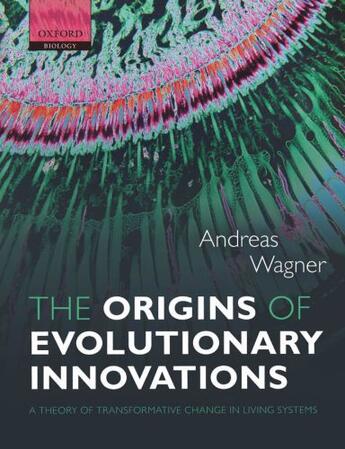Faites votre choix parmi les 20 romans en lice !
Passionné(e) de lecture ? Inscrivez-vous
gratuitement ou connectez-vous pour rejoindre la
communauté et bénéficier de toutes les fonctionnalités du site !

The history of life is a nearly four billion year old story of transformative change. This change ranges from dramatic macroscopic innovations such as the evolution of wings or eyes, to a myriad of molecular changes that form the basis of macroscopic innovations. We are familiar with many examples of innovations (qualitatively new phenotypes that provide a critical benefit) but have no systematic understanding of the principles that allow organisms to innovate. This book proposes several such principles as the basis of a theory of innovation, integrating recent knowledge about complex molecular phenotypes with more traditional Darwinian thinking. Central to the book are genotype networks: vast sets of connected genotypes that exist in metabolism and regulatory circuitry, as well as in protein and RNA molecules. The theory can successfully unify innovations that occur at different levels of organization. It captures known features of biological innovation, including the fact that many innovations occur multiple times independently, and that they combine existing parts of a system to new purposes. It also argues that environmental change is important to create biological systems that are both complex and robust, and shows how such robustness can facilitate innovation. Beyond that, the theory can reconcile neutralism and selectionism, as well as explain the role of phenotypic plasticity, gene duplication, recombination, and cryptic variation in innovation. Finally, its principles can be applied to technological innovation, and thus open to human engineering endeavours the powerful principles that have allowed life's spectacular success.
Il n'y a pas encore de discussion sur ce livre
Soyez le premier à en lancer une !

Faites votre choix parmi les 20 romans en lice !

Tentez vite votre chance pour gagner l'une des 15 bandes dessinées sélectionnées par le jury

Une interview des auteurs, un défi écriture et des livres à gagner !

Propriétaire d'une maison à Brooklyn héritée de son arrière grand-père, esclave enfui à New York, Eve Melville découvre la maison peinte en noir...